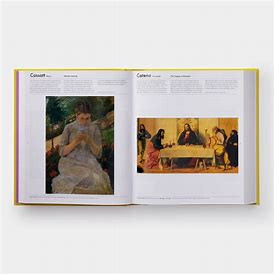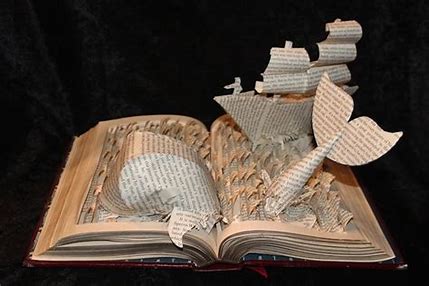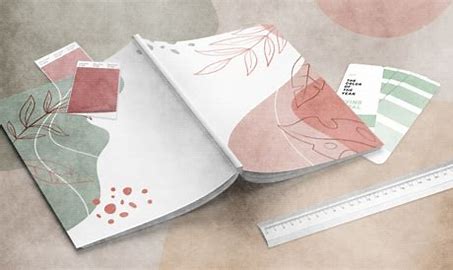Content Menu
● Understanding Art Books
● Developing a Collection Strategy
● Sources for Acquiring Books
● Preservation and Care
● Building a Network
● Conclusion
● Related Questions and Answers
>> 1: How do I start collecting rare art books?
>> 2: What conditions affect the value of an art book?
>> 3: How can I ensure the authenticity of an art book?
>> 4: What should I consider when setting up an art book display?
>> 5: Are digital art books worth collecting?
Collecting art books is a fulfilling journey that not only enriches your personal library but also deepens your understanding of the art world. Whether you are an avid art enthusiast, a professional in the field, or simply someone who appreciates the beauty of art, collecting art books can be a rewarding experience. This guide will provide you with comprehensive insights into how to effectively collect art books, from understanding the types of art books available to strategies for acquiring and preserving them.

Understanding Art Books
Art books encompass a wide range of formats and styles, each serving different purposes and audiences. Familiarizing yourself with these types is crucial for any collector.
- Monographs: These are in-depth studies of a single artist's work, often featuring high-quality reproductions of their art along with critical essays. Monographs are essential for collectors interested in specific artists.
- Exhibition Catalogs: Published to accompany exhibitions, these catalogs provide insights into the context of the displayed works. They often include essays by curators and critics, making them valuable resources for understanding contemporary trends.
- Artist Portfolios: These collections showcase an artist's work and may include prints or original artworks. They are particularly appealing to collectors looking for unique pieces.
- Anthologies and Compilations: These books gather various works around a theme or by multiple artists. They can provide a broader perspective on movements or styles within the art world.
Understanding these categories will help you make informed decisions about which types of books to include in your collection.
Developing a Collection Strategy
Creating a strategy for your collection is vital for ensuring that it reflects your interests and goals as a collector.
- Define Your Focus: Decide whether you want to specialize in a particular genre, artist, period, or medium. A focused collection can be more meaningful and easier to manage.
- Set a Budget: Determine how much you are willing to spend on your collection. This budget should account for both individual purchases and potential future investments.
- Research: Stay informed about trends in the art book market. Follow art publications, blogs, and social media channels dedicated to art books.
- Identify Trusted Sources: Establish relationships with reputable dealers, galleries, and auction houses. Knowing where to find quality art books will save you time and money.
- Consider Rarity vs. Accessibility: Decide if you want to focus on rare editions that may appreciate in value over time or more accessible books that offer aesthetic pleasure without the investment risk.
Sources for Acquiring Books
Acquiring art books can be an exciting part of the collecting process. Here are some avenues to consider:
- Book Fairs: Attend local and international book fairs where publishers and independent sellers showcase their latest releases. These events often feature rare finds and special editions.
- Galleries and Museums: Many galleries and museums offer catalogs of their exhibitions or publications related to their collections. Purchasing directly from these institutions can ensure authenticity.
- Online Bookstores: Websites like Amazon, AbeBooks, and specialized online retailers often carry a vast selection of new and used art books. Look out for limited editions or signed copies.
- Auctions: Auction houses frequently sell rare and collectible art books. Participating in auctions can lead to unique acquisitions that are not available elsewhere.
- Local Bookstores: Don't overlook independent bookstores or second-hand shops. They may have unique selections that larger retailers do not carry.
Building connections within the art community can also lead to private sales or recommendations for where to find specific titles.

Preservation and Care
Once you've started collecting art books, it's essential to take proper care of them to maintain their condition and value.
- Storage Conditions: Store your books in a cool, dry place away from direct sunlight to prevent fading and deterioration. Ideally, maintain a stable temperature and humidity level.
- Protective Covers: Use protective covers or dust jackets to shield your books from dust and physical damage. Archival-quality materials are recommended for long-term storage.
- Handling with Care: Always handle your books with clean hands or wear gloves when necessary. Avoid bending pages or spines excessively, as this can lead to wear over time.
- Regular Inspections: Periodically check your collection for signs of damage such as mold or insect infestations. Addressing issues early can prevent more significant problems down the line.
Proper care ensures that your collection remains not only visually appealing but also retains its value over time.
Building a Network
Networking with other collectors, artists, and professionals in the art world can enhance your collecting experience significantly.
- Join Art Book Clubs: Participate in clubs focused on discussing art literature. This is an excellent way to meet fellow enthusiasts who share your passion.
- Attend Workshops and Lectures: Engage in events that focus on specific artists or themes within the art world. These gatherings often provide valuable insights into collecting strategies.
- Utilize Online Forums: Platforms like Reddit have communities dedicated to art book collecting where members share advice, recommendations, and experiences.
- Collaborate with Other Collectors: Consider forming partnerships with other collectors for joint purchases or sharing resources on where to find rare editions.
Building relationships within the community not only enriches your knowledge but also opens doors to exclusive opportunities within the art world.
Conclusion
Collecting art books is more than just acquiring beautiful objects; it is an enriching journey that allows collectors to engage deeply with the world of art. By understanding different types of art books, developing a clear collection strategy, utilizing various sources for acquisition, preserving your collection properly, and building a network within the community, you can cultivate a meaningful library that reflects both personal taste and broader artistic dialogues.
The benefits of collecting extend beyond personal enjoyment; they contribute significantly to cultural preservation and appreciation of artistic expression in society at large.

Related Questions and Answers
1: How do I start collecting rare art books?
Begin by researching specific artists or movements that interest you. Set a budget for purchases and visit specialized bookstores or auctions known for rare finds.
2: What conditions affect the value of an art book?
The value is influenced by factors such as rarity, condition (including wear), edition type (first editions are often more valuable), and whether it includes signatures from the artist or author.
3: How can I ensure the authenticity of an art book?
Purchase from reputable dealers who provide provenance documentation or certificates of authenticity when applicable. It's also wise to seek expert opinions when considering high-value items.
4: What should I consider when setting up an art book display?
Ensure good lighting without direct sunlight exposure, use secure shelving that prevents tipping over, and consider environmental factors like humidity control to protect your collection effectively.
5: Are digital art books worth collecting?
Digital formats offer convenience but generally lack the tactile experience associated with physical collections. However, they can complement physical collections by providing access to hard-to-find works or new releases quickly.
































